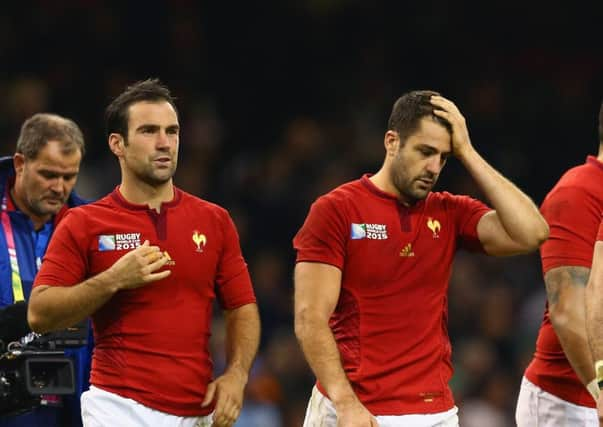Allan Massie: Northern exposure for Six Nations


The first reason, undoubtedly, is to be found in the decline of French and English rugby. The Big Two have been eclipsed in recent years by Ireland and Wales. Ten or a dozen years ago there were suggestions that the England-France match should always be played on the final day of the championship because it would probably be the title decider. Always presumptuous, the idea now seems absurd.
France may take some time to recover. French flair is a distant memory. France play poor rugby and their game is in a bad way. The Top 14 tends to be won by the richest clubs, those that can buy the best New Zealanders, Australians, South Africans and South Sea Islanders. French players take second billing, and avenues for young ones are closed or at least choked. Toulon have won the last two European Cups – with scarcely a Frenchman in their team. Meanwhile, much of the rugby in the Top 14 is dull stuff, adventure discouraged.
Advertisement
Hide AdAdvertisement
Hide AdEngland’s plight is less serious. They have what is almost a good team. In this year’s Six Nations they played some audacious rugby. Then in the run-up to the World Cup confusion seemed to set in, even panic.
It wasn’t clear how they wanted to play. To make matters worse, they no longer enjoyed their traditional dominance in the set-piece, and their back-row, though hard-working, was old-fashioned. Surprisingly, this didn’t seem to worry their coaching staff.
Wales came close to beating South Africa, but depended too much on Dan Biggar’s ability to kick goals. They lost players to injury but this made less difference than expected. The most serious were those suffered by their two outside centres, Jonathan Davies and Scott Williams. Without them, the Welsh back play was stereotyped. Welsh flair was as absent as French flair. Their giant backs –Jamie Roberts, George North and Alex Cuthbert – achieved little.
Ireland looked very good against France but were second best to Argentina. The absence of Paul O’Connell, Peter O’Mahony and Jonny Sexton, all injured against France, was a contributing cause, but a more important absentee was Sean O’Brien, suspended for punching Pascal Pape.
Almost every match showed the importance of having a voracious 7 and O’Brien was tremendous against France. Without him, Ireland came off second best to the Argentinians at the breakdown. That stupid moment of lost self-control cost Ireland dear.
Italy did no worse and no better than expected. They remain a team that plays well in patches, but rarely for 80 minutes.
Scotland had their best World Cup since the game went professional and were within a whisker of reaching the semi-final. Nevertheless there were poor spells in every match, and too many tries were conceded. A candid verdict would be: much improved, much more improvement needed.
So Wales and Scotland came close to getting into the last four. Yet nobody would pretend that they were as good as the teams that beat them, South Africa and Australia. The weaknesses of the European game were evident everywhere. Northern teams were, in general, slower than the southern hemisphere ones, slower of foot and slower of thought. They made more handling errors and more errors of judgment. It may be an exaggeration to say that the southern teams see the scrum as a means of getting on the front foot, the northern ones as a means of getting a penalty, but it’s only a slight one.
Advertisement
Hide AdAdvertisement
Hide AdAll the southern teams try to get the ball away from the breakdown as quickly as possible. All the northern ones, except Ireland at their best, suffered from having mostly slow ball. Coaching watchword: slow ball is bad ball because it gives you few options; quick clean ball lets you dictate how the next phases are played. Characteristically, a tackled southern player contrives to hold the ball out to his scrum-half. Characteristically, a northern scrum-half finds himself searching or digging for the ball.
A couple of seconds difference in retrieving the ball is the difference between ball you can use profitably and ball you can’t. Finally, New Zealanders and Australians handle better because they handle more often and learn to handle at pace.
So the gap is there but it’s not so wide a gap that it can’t be closed. Meanwhile, as we wait for the European Cup and the Six Nations, we can amuse ourselves by selecting a Lions XV purely on the basis of RWC form.
For example: Rob Kearney; Anthony Watson, Mark Bennett, Robbie Henshaw, Luke Fitzgerald; Dan Biggar, Gareth Davies; Alasdair Dickinson, Rory Best, W P Nel, Alun Wynn Jones, Jonny Gray, Peter O’Mahony, David Denton, Sean O’Brien.
Only one Englishman? Too bad. Too many Scots? Perhaps, but why not? I add, however, as I’ve said before, that the Lions concept contributes to our sense of inferiority when we play the All Blacks, Springboks and Wallabies. It makes us think we need the best of four to beat any one of them.